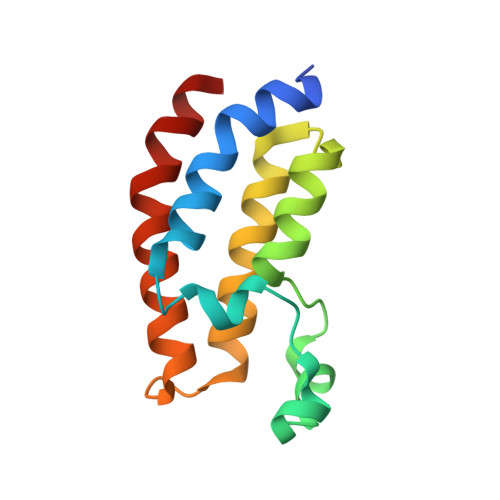XP-524 is a dual-BET/EP300 inhibitor that represses oncogenic KRAS and potentiates immune checkpoint inhibition in pancreatic cancer.
Principe, D.R., Xiong, R., Li, Y., Pham, T.N.D., Kamath, S.D., Dubrovskyi, O., Ratia, K., Huang, F., Zhao, J., Shen, Z., Thummuri, D., Daohong, Z., Underwood, P.W., Trevino, J., Munshi, H.G., Thatcher, G.R.J., Rana, A.(2022) Proc Natl Acad Sci U S A 119
- PubMed: 35064087
- DOI: https://doi.org/10.1073/pnas.2116764119
- Primary Citation of Related Structures:
7JUO - PubMed Abstract:
Pancreatic ductal adenocarcinoma (PDAC) is associated with extensive dysregulation of the epigenome and epigenetic regulators, such as bromodomain and extraterminal motif (BET) proteins, have been suggested as potential targets for therapy. However, single-agent BET inhibition has shown poor efficacy in clinical trials, and no epigenetic approaches are currently used in PDAC. To circumvent the limitations of the current generation of BET inhibitors, we developed the compound XP-524 as an inhibitor of the BET protein BRD4 and the histone acetyltransferase EP300/CBP, both of which are ubiquitously expressed in PDAC tissues and cooperate to enhance tumorigenesis. XP-524 showed increased potency and superior tumoricidal activity than the benchmark BET inhibitor JQ-1 in vitro, with comparable efficacy to higher-dose JQ-1 combined with the EP300/CBP inhibitor SGC-CBP30. We determined that this is in part due to the epigenetic silencing of KRAS in vitro, with similar results observed using ex vivo slice cultures of human PDAC tumors. Accordingly, XP-524 prevented KRAS-induced, neoplastic transformation in vivo and extended survival in two transgenic mouse models of aggressive PDAC. In addition to the inhibition of KRAS/MAPK signaling, XP-524 also enhanced the presentation of self-peptide and tumor recruitment of cytotoxic T lymphocytes, though these lymphocytes remained refractory from full activation. We, therefore, combined XP-524 with an anti-PD-1 antibody in vivo, which reactivated the cytotoxic immune program and extended survival well beyond XP-524 in monotherapy. Pending a comprehensive safety evaluation, these results suggest that XP-524 may benefit PDAC patients and warrant further exploration, particularly in combination with immune checkpoint inhibition.
- Medical Scientist Training Program, University of Illinois College of Medicine, Chicago, IL 60612.
Organizational Affiliation:

















